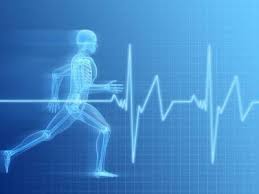 Cardiovascular screenings are a cost-effective way to identify middle-aged athletes who may risk heart attacks or strokes by participating in high-intensity sports, a new study suggests.
Cardiovascular screenings are a cost-effective way to identify middle-aged athletes who may risk heart attacks or strokes by participating in high-intensity sports, a new study suggests.
“I would suggest that all middle-aged athletes should be screened at least once, particularly men over 40 and women over 50,” said the study’s lead author, Dr. Andrea Menafoglio, a cardiologist at Ospedale San Giovanni in Bellinzona, Switzerland.
While the benefits of regular exercise are well known, vigorous physical exertion can be life-threatening for older athletes who may not realize that they have an underlying heart condition. Guidelines in Europe and the U.S. urge cardiovascular risk evaluations for middle-aged athletes, but researchers say the recommendations aren’t universally followed because widespread implementation hasn’t proved effective or affordable.
To see if widespread screening could detect hidden symptoms and risks for heart disease at a reasonable price, Menafoglio and colleagues at three hospitals in Switzerland evaluated 785 athletes between the ages of 35 and 65.
and colleagues at three hospitals in Switzerland evaluated 785 athletes between the ages of 35 and 65.
Each of the athletes reported spending at least two hours a week participating in high-intensity sports such as running, cycling, triathlon, football, swimming, tennis, climbing, or cross-country skiing.
The initial evaluation included a personal and family history, a physical  exam, and a resting electrocardiogram, or ECG. For each participant, the researchers also estimated the risk of death from cardiovascular disease within the next 10 years based on gender, age, cholesterol level, blood pressure, and smoking habits.
exam, and a resting electrocardiogram, or ECG. For each participant, the researchers also estimated the risk of death from cardiovascular disease within the next 10 years based on gender, age, cholesterol level, blood pressure, and smoking habits.
Overall, the cost of screening averaged $199 per athlete (about 160 euros), because most athletes didn’t need any testing beyond the initial evaluation.
About one in seven athletes needed additional screening. Extra tests found some cases of previously unimagined diabetes, hypertension, high cholesterol, and mild heart valve disease.
Overall, the screenings caught previously undetected cardiovascular abnormalities in about 3 percent of participants and a high cardiovascular risk profile in about 4 percent.
high cardiovascular risk profile in about 4 percent.
Just three athletes had abnormalities that made it too dangerous for them to continue their exercise routines.
Source: Reuters Health
“The Presidential Healthcare Center can design a personalized exercise prescription for you.”


